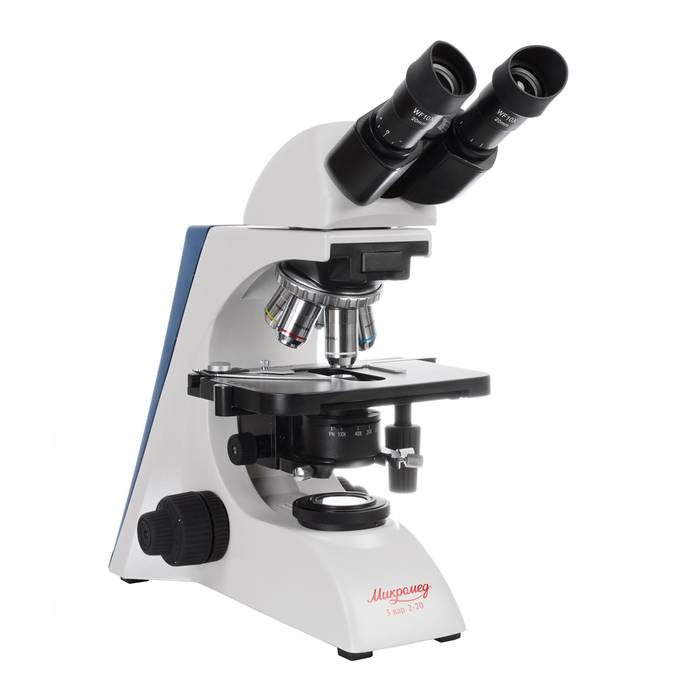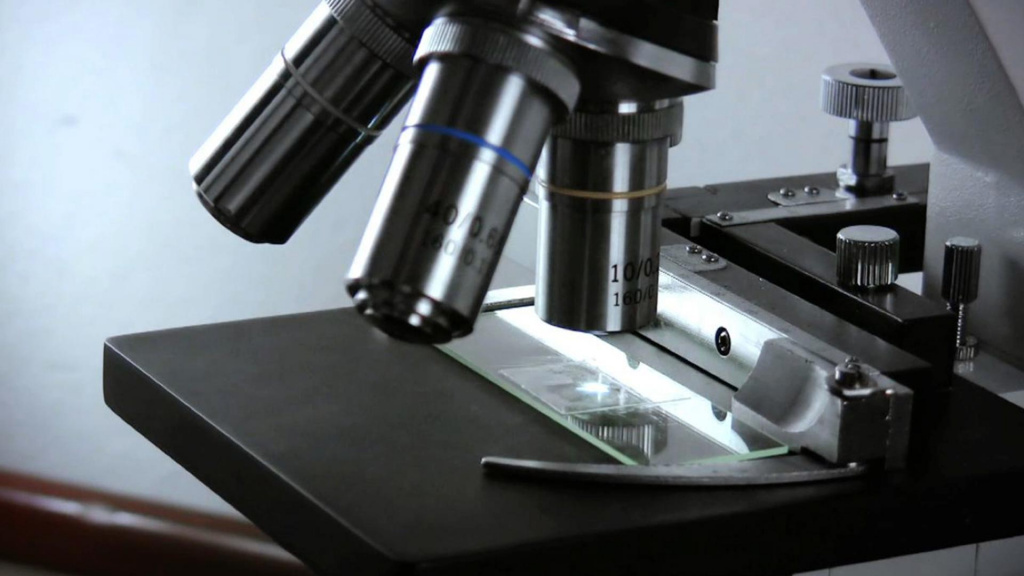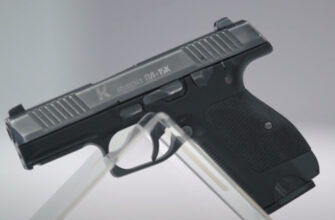Contrary to popular belief, a microscope is not just an interesting and very useful thing that can significantly expand a child's knowledge of the world around him. Not a single lesson in chemistry and physics at school and institute can do without this tool, and this tool is also extremely necessary in a variety of industrial laboratories and in production. It is also used by all sorts of radio amateurs, screwdriver and soldering iron masters – with its help, it is not difficult to solder small transistors and other parts to a printed circuit board. Of course, only if the microscope is selected correctly, and its functionality fully meets the requirements and operating conditions.

- The best manufacturers. Which company to choose a microscope?
- Types of microscopes and their principle of operation
- Monocular microscopes
- disadvantages
- Binocular microscopes
- disadvantages
- Electron microscopes
- disadvantages
- Selection options. What to look for when choosing a microscope?
- Which microscope to choose for specific tasks?
- Choosing a microscope for a student
- Choosing a microscope for cell research
- Criteria for choosing a microscope for soldering
- Video for choosing a microscope
The best manufacturers. Which company to choose a microscope?
Modern microscope models differ significantly from their predecessors. The quality of the transmitted image, resolution and clarity increases, as well as additional features such as backlighting and the function of recording images in digital format. The only thing that remains unchanged is the leading manufacturing companies, which are considered traditional market leaders and supply their own products to various industrial laboratories. It is for this reason that preference should be given to products of the following manufacturers:
-
Sturman;
-
Sititek;
-
Zeiss;
-
Nikon;
-
Sigeta;
-
Bresser;
-
Levenhuk;
A great variety of products are produced under these trademarks that can satisfy the needs of both beginners and specialists in certain fields. However, before giving preference to this or that model, it is necessary not only to study its technical characteristics and compare the device with nearby counterparts, but also to get acquainted with the reviews of buyers who managed to test this or that model in practice and highlighted its strengths and weaknesses.
Types of microscopes and their principle of operation
A microscope is an optical device that allows you to examine objects at multiple magnifications. The simplest microscopes are a complex of lenses of various designs and diameters, which provide multiple approximation and allow one to examine the cellular-fibrous structure of an object. The basic principle of operation and functionality of the device remain unchanged to this day, however, the technical implementation of the main capabilities has advanced far ahead due to the implementation of electronic computing power and computer technology. At present, all microscopes on sale can be divided into the following conventional categories.
Monocular microscopes

The simplest and most popular optical devices with decent functionality among buyers. The zoom range of the best devices can reach 1200-1500 times, which, together with the use of high-quality optics, provides a sharp, detailed and clear picture. Most models come with interchangeable color filters, which allow to neutralize the peculiarities of light incidence, as well as interchangeable monoculars that expand the capabilities of the device.
Advantages
-
Compact dimensions;
-
Allows installation of monoculars with other multiplicity characteristics;
-
Replaceable color filters included;
-
Approximation up to 1500 times;
-
Decent functionality;
disadvantages
-
They are not highly durable;
-
Some discomfort due to the monocular design;
-
Quite a laborious setup that requires certain skills;
Binocular microscopes

Devices equipped with two independent monoculars, thanks to which the user can observe through the microscope with two eyes. This has a positive effect on the clarity of the resulting image and provides high-quality and complete color reproduction of the object under study. The best models of this class can boast of an approximation up to 1500-1600 times, while the eyepiece's approximation range ranges from 10 to 20x. A very interesting feature of such devices is the so-called revolving clip with fixed lenses of different magnification, which makes it possible to change the zoom range online.
Advantages
-
High functionality;
-
Possibility of connecting a digital camera (not for all models);
-
The presence of a revolving clip that allows you to fix lenses of different magnification degrees;
-
High zoom range of lenses, reaching 1500-1600x for the most functional models;
-
A clear, contrasting and detailed picture in any operating conditions;
disadvantages
-
Require certain handling skills;
-
Additional accessories are quite expensive;
-
Are not cheap;
Electron microscopes

The most functional, modern and advanced devices that have gained immense popularity at the present time. These devices do not have eyepieces as such, and the image is transmitted either to the built-in LCD display or to a computer monitor using a special cable, and therefore the user gets the opportunity to record the resulting image without using any additional devices. Another advantage is the presence of a large number of different accessories – both original, manufactured by manufacturers, and third-party, compatible with a specific device. With their help, you can significantly expand the functionality of the device, change its light sensitivity or zoom range, level the color flux using an appropriate filter and perform many other functions.
Advantages
-
Easy to use
-
The presence of a large number of additional accessories;
-
The ability to record images in digital format without the use of additional devices;
-
High picture quality;
-
Excellent functionality;
disadvantages
-
High price;
-
The need for a power source or a stationary PC;
Selection options. What to look for when choosing a microscope?

Modern microscopes are high-precision optical devices, the functionality of which depends entirely on the technical solutions implemented by the manufacturer and a set of additional options present in it. Of course, the higher the functionality of this or that microscope, the more expensive its final cost. It is for this reason, when choosing a device with the maximum value for money, the following functions should be taken into account:
-
Lens construction. The resolution of the displayed image and its overall quality depend on how thoughtful the design is. Currently, both non-immersion lenses and their liquid counterparts can be found on sale. The latter allow obtaining high-resolution images, and they use oil or distillate as a working fluid.
-
The presence of an optical image correction system. Any optical device certainly has the so-called chromatic aberration – a kind of defect that is expressed in the distortion of geometric straight lines of the image. In order to minimize it, manufacturers use many different solutions, in particular, they install special lenses that have a special shape. The highest quality devices are equipped with plan-achromatic and plan-chromatic objectives, in which chromatic aberration is completely absent. I mark such lenses with the letters PLAN and PLAN-APO, respectively;
-
Lens magnification. Displays the maximum zoom ratio and the ability to view the smallest details of an object. The magnification almost always starts from 10-15x and can reach 2000-4000x for professional research models. Since this parameter has the most direct effect on the functionality of the microscope, before buying a device, you need to decide on the tasks that will be solved with its help.
-
Resolution of the microscope. A parameter that directly affects the quality, sharpness and contrast of the resulting image. It entirely depends on the aperture of the device – the higher this parameter for a particular microscope, the higher its resolution. When it comes to dry lenses, their NA is 1.0. For 'wet' models, this parameter is 1.25, respectively. Choosing an optical microscope, preference should be given to models with a resolution of at least 0.2 μm.
-
Maximum useful microscope zoom. Displays the zoom limit at which picture quality is still maintained at its maximum level. As a rule, for optical microscopes, this parameter can vary in the range from 1000 to 1250 times, depending on the type of lenses installed on it. Despite the fact that such devices are capable of providing a greater approximation, the picture quality suffers greatly, which in some cases makes the device useless;
-
Eyepiece type and design. If we talk about optical models, on sale you can find devices equipped with a monocular, binocular microscopes, as well as models of a combined type, equipped with both a monocular and binoculars. In the case of electronic and digital devices, the role of eyepieces is performed by a digital display or a computer monitor.
Which microscope to choose for specific tasks?

The technical features of specific devices is a parameter that is undoubtedly important, but it must be considered based on functionality and specific operating conditions, as well as the tasks that are planned to be solved using the device.
Choosing a microscope for a student
In order for natural science lessons to be as effective as possible and to benefit the child, it is necessary to choose a high-quality microscope. For these purposes, a monocular or binocular optical microscope equipped with planachromatic lenses is quite suitable. The multiplicity of such a device should reach 350-400x with the ability to change using a set of interchangeable lenses located on the revolving clip. A useful function will probably be the ability to connect a digital camera, which will allow you to get detailed pictures of the object under study.
Choosing a microscope for cell research
Cell research is not an easy task and not everyone needs it. First of all, we are talking about those who study such a discipline as biology. The main characteristic of such devices is the maximum possible zoom ratio, and therefore preference should be given to models with the maximum zoom ratio, equipped with a plan-chromatic or plan-apochromatic objective and a resolution of at least 0.25-0.3 microns. The design of the device can be both traditional, optical, and modern digital – it all depends on the tasks and conditions in which the research will be carried out.
Criteria for choosing a microscope for soldering
Microscopes are no less popular among various kinds of radio engineers and amateurs of electronic computers, as well as among the masters who repair it. Soldering printed circuit boards and their individual elements using a microscope is a fairly common occupation and presents quite certain characteristics to the type of microscope. The multiplicity of the approximation here does not play a significant role – devices with an approximation of the order of 50-75 times are quite enough. Much more important is the overall image coverage, as well as the complete absence of distortion and chromatic aberration. The resolution also plays an important role – the higher it is, the easier it is to solder small parts. The most popular among engineers are conventional optical microscopes equipped with binocular eyepieces, as well as modern digital devices.
In the following articles, our experts will tell you how to choose a telescope and the secrets of choosing a filter for your aquarium.
Video for choosing a microscope
Attention! This material is the subjective opinion of the authors of the project and is not a purchase guide.









